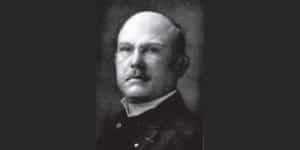Noriaki Kano biography and books

Noriaki Kano (1940) is a Professor Emeritus, lecturer and keynote speaker. Noriaki Kano is also a TQM guru and consultant in the field of quality management. He is the creator of a customer satisfaction model also known as the Kano model, which is a simple diagram that distinguishes between essential and differentiating factors with respect to concepts of customer quality.
The biography of Noriaki Kano
Between 1960 and 1970, Kano obtained both his master’s degree (MSc.) and his doctorate (Ph.D.) from the University of Tokyo in Japan.
He began his career at the Tokyo University of Science (TUS) and he became a lecturer/ professor in the fields of quality management and general management.
Later, he was also appointed Department Head of the faculty of Management Science. During his career, Kano continued his research into customer satisfaction. He developed the Kano model by turning traditional ideas into new insights from the product or service perspective.
Noriaki Kano believed that not all product or service performance factors are equal to those of the end user/ customer, but that some factors create higher levels of customer loyalty than other others.
One of Kano’s best-known books is the Guide to TQM in Service Industries (1996). In 1997, the Union of Japanese Scientists and Engineers (JUSE) awarded Noriaki with the Deming prize for Individuals.
That same year he also received the Deming Lecturer Award from the American Statistical Association for his publication ‘Business Strategies for the 21st Century and Attractive Quality Creation‘ (1996).
Books and publications
- 2007. Quality award and its evaluation method. Incheon.
- 2002. Attractive Quality Creation Under Globalization [J]. China Quality, 9, 32-34.
- 2001. Life cycle and creation of attractive quality. In 4th QMOD Conference, Linköping, Sweden (pp. 18-36).
- 2001. Attractive quality creation. In Proceedings of the 4th QMOD conference, Linköping. Sweden. McGraw-Hill.
- 1999. Quality in Japan. McGraw-Hill.
- 1997. A perspective on quality activities in American firms. Managing Strategic Innovation and Change. Oxford University Press, New York, NY, 402-416.
- 1996. Guide to TQM in Service Industries. Asian Productivity Organization.
- 1996. Business strategies for the 21st century and attractive quality creation. ICQ, Yokohama, 105.
- 1996. Why is TQM necessary in the service sector. TQM in Service Industries, 80-113.
- 1995. Upsizing the organization by attractive quality creation. In Total Quality Management (pp. 60-72). Springer Netherlands.
- 1994. Humanware, Human Error, and Hiyari-Hat: A Template of Unsafe Symptoms. Journal of Construction Engineering and Management-asce – J CONSTR ENG MANAGE-ASCE , vol. 120, no. 2.
- 1993. A perspective on quality activities in American firms. California Management Review, 35(3), 12-31.
- 1993. Kano’s Method for Understanding Customer-defined Quality. Center for Quality of Management Journal, Japan, 2.
- 1990. A Markov Model Incorporating Individual Differences. Japanese Journal of Applied Statistics, vol. 19, no. 1, pp. 1-18.
- 1989. Continuous improvement: quality control circles in Japanese industry. Center for Japanese Studies, The University of Michigan.
- 1988. Lectures on Total Quality Control and the Deming Management Method. unpublished lecture notes, University of Miami Quality Program, Coral Gables, Fla, 89.
- 1987. TQC as total quality creation. In Proceedings of the International Conference on Quality Control, Tokyo (pp. 143-148).
- 1987. Quality Management in Management Engineering.
- 1984. Attractive quality and must-be quality. Journal of the Japanese Society for Quality Control (in Japanese) 14 (2): 39–48. ISSN 0386-8230.
- 1984. Miryokuteki Hinshitsu to Atarimae Hinshitsu. Attractive Quality and Must-Be Quality”). Quality, JSQC, 14(2).
- 1984. The charming quality and the should-be quality. Quality Control Journal, 21, 33-41.
- 1983. A study on the problem solving procedures of zero, decreasing, increasing target problems in TQC promotion-JSQC. In 13th Conference.
- 1968. Concept of TQC and its Introduction.
How to cite this article:
Van Vliet, V. (2013). Noriaki Kano. Retrieved [insert date] from Toolshero: https://www.toolshero.com/toolsheroes/noriaki-kano/
Original publication date: 07/06/2013 | Last update: 01/09/2024
Add a link to this page on your website:
<a href=”https://www.toolshero.com/toolsheroes/noriaki-kano/”> Toolshero: Noriaki Kano</a>





